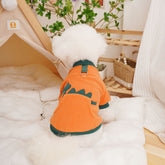The Art of Thrifting: Trends, Strategies, and the Quest for Unique Finds
Table of Contents
- Key Highlights:
- Introduction
- The Thriving Thrift Culture
- The Essentials of a Successful Thrift Haul
- The Thrilling Hunt: A Psychological Perspective
- Online Thrifting: The Future of Second-Hand Shopping
- Tips for Selling Your Thrifted Finds
- The Thriving Community: Thrift Culture and Beyond
- The Challenges of Thrifting
Key Highlights:
- Thrifting has evolved from a niche hobby to a mainstream trend, with increasing numbers of people drawn to the uniqueness and sustainability it offers.
- Successful thrifting combines patience, skill, and an understanding of fashion and market trends, allowing shoppers to uncover valuable and unique pieces.
- The emergence of thrifting communities online provides support and inspiration, transforming individual pursuits into social experiences.
Introduction
Thrifting has transitioned from an overlooked pastime to an art form embraced by many. With sustainability becoming increasingly vital in consumer choices, second-hand shopping is not merely a budget-friendly option; it represents a lifestyle choice that champions individuality and environmental stewardship. As more shoppers turn to thrift stores, flea markets, and second-hand boutiques, the conversation around what thrifting can achieve grows richer. This article aims to explore the multifaceted world of thrifting, examining modern strategies, valuing thrifted items, and the thriving community surrounding this engaging hobby.
The Thriving Thrift Culture
The rise of the thrift culture can be attributed to several factors. Firstly, a major shift towards sustainability has led consumers to seek environmentally friendly shopping alternatives. Thrifting not only extends the lifespan of items but also minimizes the demand for new production, making it a preferred choice among eco-conscious individuals.
Social media platforms, particularly Instagram and TikTok, have played a pivotal role in promoting and popularizing thrifting. Influencers showcasing their thrift hauls and unique finds inspire countless followers to explore these avenues. The hashtag #ThriftStore finds millions of engagement, emphasizing the community aspect of thrifting.
Moreover, the COVID-19 pandemic accelerated the growth of thrift shopping, as people sought alternatives to traditional retail environments. Uncertain economic conditions prompted individuals to seek bargains while maintaining style. As thrift stores experienced increased traffic, many of them adapted their offerings and improved their appeal to both seasoned thrifters and newcomers.
The Essentials of a Successful Thrift Haul
Successful thrifting transcends mere luck; it requires a combination of strategy, patience, and knowledge. Here are some essentials to consider for anyone looking to elevate their thrift shopping experience:
Research and Preparation
Preparedness is critical when venturing into thrift stores. Fashion-savvy thrifters often research current fashion trends to set a baseline for what they hope to find. Recognizing popular brands, styles, and fabrics allows shoppers to make informed decisions quickly. Utilize resources like Pinterest and fashion blogs to identify the latest styles you might want to incorporate into your wardrobe.
Timing is Everything
Visiting a thrift store at the right time can significantly improve your chances of finding desirable items. Many stores restock inventory on specific days, usually marked by clearance sales or seasonal changes. Early mornings are often prime time to discover fresh goods before they get picked over. Understanding when your local thrift stores receive new donations can give you an edge in your hunt.
Know Your Value
Determining the value of thrifted items is an essential skill for any thrifter. Research similar items online to ascertain a fair market value and help you decide if a piece is worth buying. Vintage and designer items can significantly appreciate, so understanding the nuances of what constitutes a valuable find makes a vital difference. Additionally, familiarize yourself with common brands and how they are perceived in the market.
Thrift with a Purpose
Having a clear intention can channel the thrifting experience more effectively. Whether you seek casual wear, seasonal pieces, or unique home décor, defining your goals allows you to sift through items with laser focus. This specificity can prevent impulse buys and ensure your haul aligns with your style and needs.
The Thrilling Hunt: A Psychological Perspective
The process of thrifting is not merely a shopping experience; it's an exhilarating hunt filled with the potential for discovery. The thrill of finding that hidden gem can mirror the excitement of a treasure hunt, blending psychology with consumer behavior.
Dopamine and Reward Mechanisms
The act of finding a valuable item can trigger dopamine release in the brain, generating feelings of pleasure and satisfaction. This is part of why thrifting can be addictive; each visit holds the potential for reward. The unique blend of uncertainty and treasure-seeking fosters engagement in what might initially be perceived as a mundane shopping task.
Building a Narrative
Thrifted items often come with their own story, which adds depth to the purchasing experience. Unlike mass-produced garments, each thrifted piece carries the history of its former owner. Whether it’s a vintage jacket from the '90s or a handcrafted vase, these items weave narrative threads that contribute to a personal connection. Shoppers often relish not just the product but the charm and nostalgia associated with their finds.
Online Thrifting: The Future of Second-Hand Shopping
Online platforms for thrifting have gained immense popularity, expanding opportunities to explore thrifted items without geographical limitations. Websites and apps such as Depop, Poshmark, and ThredUp allow consumers to access a broader range of products and brands.
Community Engagement
Many online thrifting platforms incorporate social features that allow users to engage with one another, share styling ideas, and showcase recent finds. This builds a sense of community similar to that found in physical thrift stores. Motivated thrifters can quickly gain feedback and inspiration from their peers, turning thrifting into a collaborative endeavor rather than a solitary task.
Sustainability Through Digital Choices
The digitalization of thrifting aligns with the sustainability ethos, as purchasing items online can reduce the carbon footprint associated with traditional retail. Virtual thrifting ultimately contributes to a circular economy, promoting reuse and recycling of garments and goods.
Tips for Selling Your Thrifted Finds
As the resurgence of thrifting increases, so does the opportunity for individuals to sell items from their collections. Whether you’re decluttering or curating an online shop filled with your thrifted treasures, understanding how to price and market items effectively is crucial.
Utilize High-Quality Imagery
Clear, high-resolution images are essential when selling online. Ensure that your items are well-lit and presented in a flattering manner. Take photographs from multiple angles and display any unique characteristics that may set the piece apart.
Write Engaging Descriptions
Alongside photographs, descriptions play a vital role in conveying the essence of the item. Highlight its history, condition, and any notable design features. Using relevant keywords can help your listings be more discoverable, attracting potential buyers.
Set Competitive Pricing
Research similar items to gauge appropriate pricing for your listed items. Competitive pricing can stimulate interest while still allowing you to profit. Consider offering bundle deals or discounts for followers to encourage repeat customers and build a loyal following.
The Thriving Community: Thrift Culture and Beyond
Communities springing up around thrifting encompass diverse demographics and represent a collective appreciation for the unique culture that thrifting harbors. From college students to established professionals, thrifting provides a space for self-expression often overlooked in traditional retail.
Local Meetups and Swap Events
Engaging in local thrift meetups or swap events fosters a communal spirit among thrifters. Such gatherings enable enthusiasts to share tips, exchange items, and explore new thrift shops in various neighborhoods. This not only boosts individual thrifting skills but also strengthens the social fabric among participants.
Social Media Engagement
Social media platforms have revolutionized the way thrifters connect. With numerous groups dedicated to sharing insight, tips, and haul posts, the experience of thrifting transforms into a digital gathering hub. These platforms have also resulted in heightened awareness around sustainable practices within fashion and consumerism.
The Challenges of Thrifting
While thrifting presents numerous benefits, several challenges accompany the search for unique items. Thrift shoppers often encounter crowded aisles and competition among fellow shoppers, which may detract from the experience.
Quality Check
Assessing the quality of thrifted items can be challenging. Ripped seams, missing buttons, and significant wear are common; thus, thrifters must be discerning. Building an eye for quality takes time and experience, but over time, increased familiarity with fabric and construction will yield better results.
Emotional Attachment
As thrifters uncover unique items, they may form emotional attachments. The inclination to hoard or keep too many pieces can conflict with the sustainable ethos that thrifting promotes. It is essential to consistently evaluate one’s collection and maintain a mindful approach to consumption.
FAQ
What is thrifting, and why is it popular?
Thrifting refers to the act of shopping at thrift stores, second-hand shops, and flea markets for pre-owned items. Its popularity has surged due to an increasing focus on sustainability, affordability, and individual expression through unique finds.
How can I improve my thrifting skills?
Improving your thrifting skills involves research, preparation, and practice. Familiarizing yourself with fashion trends, being strategic about timing your visits, and developing an eye for valuable pieces can greatly enhance your thrift shopping experience.
Are there any downsides to thrifting?
While thrifting offers numerous advantages, challenges such as competition amongst shoppers, quality checks, and emotional attachments to items can complicate the experience. It is essential to remain mindful and self-aware, particularly in managing one’s collection.
How can I sell my thrifted items online?
To sell thrifted items online, use high-quality images, write engaging descriptions, and set competitive pricing. Leverage social media platforms to showcase your items and attract potential buyers, creating a loyal customer base.
How has the COVID-19 pandemic impacted thrifting?
The COVID-19 pandemic has accelerated the growth of thrifting as individuals searched for affordable shopping options in uncertain economic times. Additionally, online thrifting platforms have gained popularity, allowing users to shop from the safety of their homes.
Thrifting embodies both a unique shopping experience and a broader lifestyle choice. Consequently, as people increasingly embrace sustainability and individuality, the art of thrifting will undoubtedly continue to gain momentum, encouraging creativity, community, and environmental stewardship worldwide.





